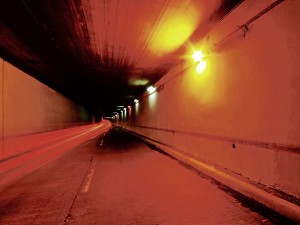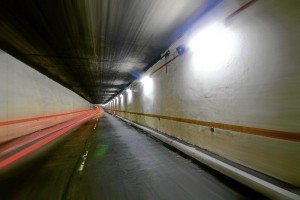Green technology gives tunnel new light

BEING a hands-on boss, Acuzar makes sure that employees who perform well are rewarded and given incentives.
More and more Filipinos are starting to see the light at the end of the tunnel.
At least for those who have traveled along the 297-meter Boni Tunnel in Mandaluyong City, which was once a poorly lit four-lane tunnel that crosses EDSA, one of Metro Manila’s key thoroughfares.
Recently, a solar-powered LED lighting system, the first of its kind in the country, was installed along the Boni Tunnel not only to provide better lighting for motorists and the riding public, but also help the country reduce its carbon footprint and gas emissions.
At the same time, the so-called Boni Tunnel Efficient Lighting System project is expected to yield as much as P240,000 in savings in electricity expenses for the city government of Mandaluyong.
Result of collaboration
Article continues after this advertisementThis project was a result of a collaboration among the Department of Energy (DoE), Department of Public Works and Highways (DPWH), Asian Development Bank (ADB), world lighting leader Philips, the PNOC Renewables Corp. (PNOC-RC), the Metro Manila Development Authority (MMDA) and the Mandaluyong city government.
Article continues after this advertisement“ADB is proud to be associated with an initiative that helps the country move towards lower carbon emissions. This project demonstrates technology alternatives—long-lasting batteries and solar power—that will improve people’s life through green technology,” Anthony Jude, director in ADB’s Southeast Asia department, said in a statement.
According to the ADB, the solar-powered LED lighting system consisted of 94 22-watt LED tubes generating 30,000 burning hours and 70 percent lumen maintenance. It is partially powered by solar panels installed in a 59-square-meter park on top of one of the tunnel entrances.
Solar panels

Solar panels, the ADB noted, are meant to last 20 years. However, many off-grid solar power projects fail due to the short lifespan of the battery systems. To overcome this challenge, the Boni Tunnel project uses lithium ion batteries—those that are common in mobile phones, laptops and electric cars—that are expected to last about 10 years, it said.
For its part, the DoE had overseen the installation of tubular LEDs, which the government agency said were considered ideal for illuminating the roadway inside the tunnel. These lights will be powered by a grid-interactive photovoltaic system.
Template for replication
“The success of this project, particularly the use of energy-efficient lighting, is expected to create a template for replication in other similar site applications and is seen to revolutionize the country’s major roadways,” the DoE said in a separate statement.
Energy Secretary Jose Rene D. Almendras, who graced the unveiling of the solar LED system, stressed the need to use energy-efficient lighting systems to “continuously moderate electricity consumption. In reducing consumption, we also lessen our carbon footprints effectively contributing to the solutions towards the issue of climate change.”
Almendras stated he was hoping that the success of this project, particularly the use of energy-efficient lighting, would be able to create a template for replication in other similar site applications and is seen to revolutionize the country’s major roadways.
Other contributions to the Boni Tunnel Efficient Lighting System are the lighting systems supplied by Philips; solar modules provided by PNOC-RC; and the mounting structures, enclosures and electrical installation provided by DPWH. Both the MMDA and the city government of Mandaluyong would be responsible for the system and tunnel maintenance.
“Philips Lighting has always been a strong advocate for the switch to energy-efficient LED lighting solutions that is not only sustainable in the long run, but also, in this instance, has the ability to enhance visibility and road safety,” noted Rico Gonzales, country manager of Philips Electronics and Lighting for the Philippines.
“Together with the vision of Almendras and our LED lighting solutions, we are able to provide safer roads for the drivers in Metro Manila,” Gonzales added.